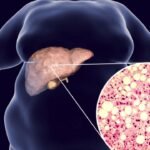Cervical Cancer: Cervical cancer is one of the most common cancers in women. Sadly, many women still remain uninformed about it. To raise awareness, World Cervical Cancer Elimination Day is celebrated every year on November 17th. This day is dedicated to raising awareness among women worldwide and taking steps towards eliminating this disease. The World Health Organization leads this campaign, and many health organizations work together.
Early detection makes prevention easier.
According to doctors, cervical cancer can be completely treated successfully if detected in its early stages. Early symptoms are often mild, so women often ignore them. Irregular vaginal bleeding is a major warning sign. Sudden spotting between periods, bleeding after intercourse, or bleeding after menopause can be alarming. Additionally, a sudden odor or change in the color and quantity of vaginal discharge are also considered early signs of the disease.

Body pain also signals this.
Sometimes, as the disease progresses, women experience persistent pain in the pelvic area. Back pain or discomfort in the legs are also symptoms. This is because the cancer gradually begins to affect surrounding tissues. Dr. Amit Upadhyay explains that such symptoms should not be taken lightly, as delays can make treatment difficult.
At what age is the highest risk?
The highest risk of cervical cancer is found in women between the ages of 30 and 50. Although HPV infection can occur before this time, the cancer progression process progresses gradually, and the risk becomes more pronounced after the age of 30. This risk increases further in women who do not get regular Pap smears or HPV tests. Therefore, regular screening is essential for every woman.
Vaccines and screenings are preventable.
Cervical cancer is one of the most preventable diseases. Early screening and the HPV vaccine significantly reduce the risk. Experts say that regular screenings and timely vaccinations after the age of 21 are crucial. This not only reduces the risk of disease but also ensures a safe and healthy life for women. Awareness is the most important tool in fighting this disease.







